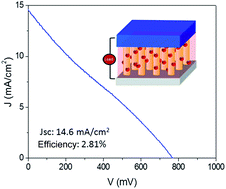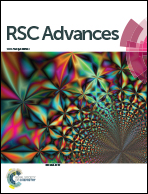High efficiency solar cell based on ZnO nanowire array prepared by different growth methods†
Abstract
A high efficiency solar cell based on ZnO nanowire (NW) arrays of different morphology and crystalline quality has been assembled and investigated. According to the basic source of the hydrothermal growing solution, ZnO NW was prepared by using (a) ammonia solution (N method), (b) hexamethylene tetramine (H method) and (c) alternating of N and H (NH method), respectively. The morphology and crystalline quality of the ZnO NW array have been characterized by using scanning electron microscopy, Raman spectroscopy and transmission electron microscopy. The CdS and CdSe nanoparticles were deposited on ZnO NW array, which is applied as a ZnO/CdS/CdSe core/interlay/shell in solar cell with a polysulfide electrolyte and a CoS counter electrode. The results indicate that the photovoltaic behaviour strongly depends on the morphology and crystalline quality of the ZnO NW array. We observe an increasing short-circuit current density of N < NH < H by using ZnO NWs prepared with different methods. The best power conversion efficiency of 2.81% and a short-circuit current of 14.6 mA cm−2 were obtained. The results would open up new avenues towards the potential applications in designing high efficiency quantum dot sensitized solar cells.


 Please wait while we load your content...
Please wait while we load your content...